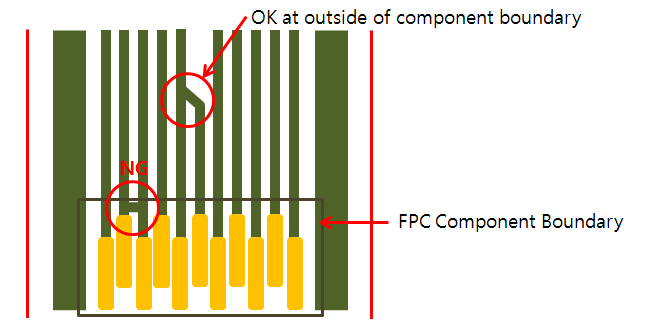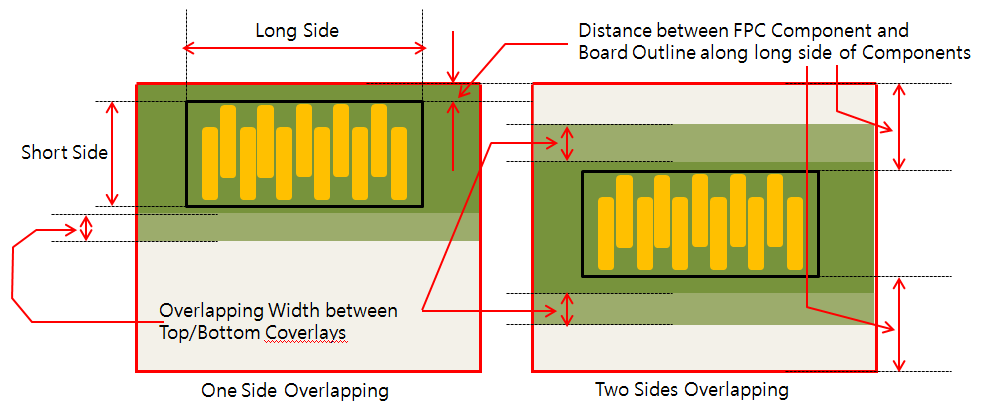Bonding Pad
Check FPCB bonding pads.
Coverlay Layer Definition
Check the rule of Coverlay in FPCB.

Figure 1.
FPC Component Definition
Define FPC components.
Checking
Define checking items.
View new features for PollEx 2022.1.
Learn the basics and discover the workspace.
Discover PollEx functionality with interactive tutorials.
PollEx DFA is an assembly status checking toolset for PCB design based on 3D package library.
PollEx DFE+ is a fully automated SI analysis tool.
PollEx DFM is a board level manufacturability checking software.
From the menu bar, click Option > DFM > DFM Input after reading the design file to make a DFM input file.
Check the FPCB bending area.
Check FPCB bonding areas.
Check FPCB bonding pads.
Check the rule for Center Line Mark in FPCB.
Check rules for Coverlay.
Check rules for Coverlay.
Check the clearance between data on specified layer and other objects.
Check the rule of FOG dummy pads.
Check Vias out of specified component boundary.
Check the size of Pin Pad and Pin Pitch to distinguish the FPCB manufacturing process.
Check if the bending area is designed with mesh copper.
Check different clearances between Vias.
Checks patterns in FPCB are rounded.
Check clearance between certain components and another silkscreen.
Check the rule of silkscreen around Vias.
Check the silver paste in bending area in FPCB.
Check rules of stiffener.
Tab Sub Mark is a mark to recognize the beginning of FPCB when rigid PCB is used with flexible PCB.
Check the clearance for an area affected by ground wall.
Verify if the clearance between test points and other objects follow specifications and if the test points contain text.
Analyze the clearance between a test point and each component on a board.
Find and examine underfill areas in BGA-type components.
Lock the DFM input rule file (*.DFMI) to prevent any modifications from others.
PollEx Logic DFE is a toolset that checks electrical validity and standardizing of schematic design.
Definition for meta character using in making sentence for searching option.
PollEx DFM is a board level manufacturability checking software.
Check FPCB bonding pads.
Check FPCB bonding pads.
Check the rule of Coverlay in FPCB.

Define FPC components.
Define checking items.




© 2022 Altair Engineering, Inc. All Rights Reserved.